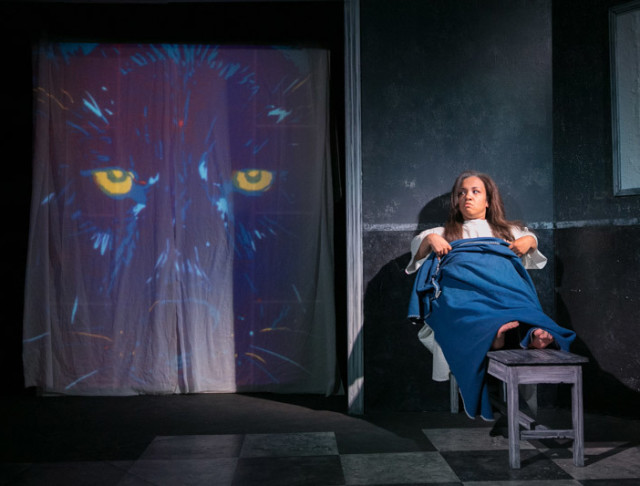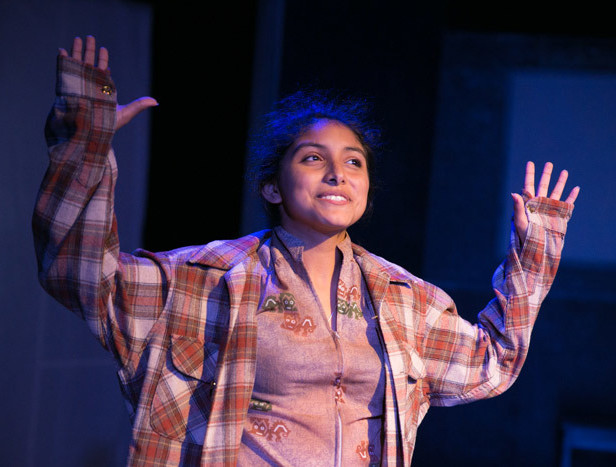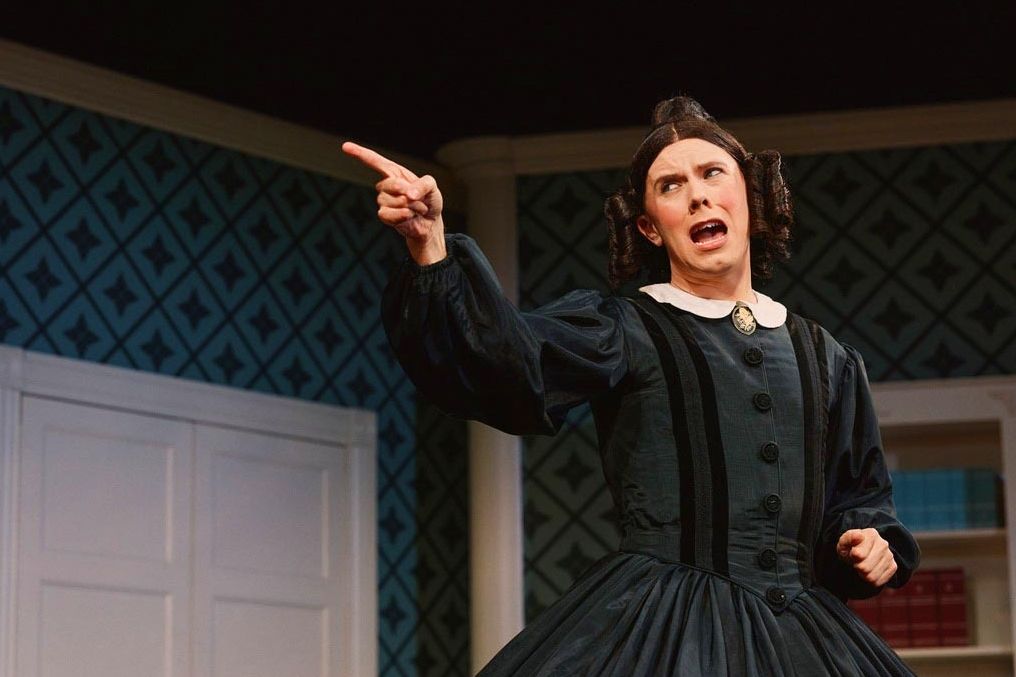Defunkt’s 'In the Forest, She Grew Fangs' Offers a Surreal Treatise Against Teen Bullying

Lauren Modica as Ruth
Image: Rosemary Ragusa
Lucy, a social outcast and the object of nasty verbal abuse in her rural American town, develops a crush on a new girl in class right around the time her problems at school start to come to a head. Confused and angry, and looking for some escape, her regular walks in the woods start getting longer and happening at later hours. She comes home increasingly disheveled. Mangled deer carcasses start to appear around town. You get the idea.
If you heard about (or, God forbid, sat through) 2011’s horrendous werewolf flick Red Riding Hood, aimed at exactly the demographic that Spotswood is portraying with In the Forest, you might be inclined to think Defunkt’s production is little more than forgettable refuse for the Twihards. It’s not. This is a timely work, not because it comes on the heels of the cultural obsession with werewolves/vampires/what have you, but because it imaginatively confronts the cultural plague of bullying that, despite contributing heavily to teen suicides, remains inadequately addressed.
In the Forest, She Grew Fangs
Defunkt Theatre
Thru Nov 15Fortunately, the play is not just timely, it’s good, and Defunkt does Spotswood’s script more than justice. Confident direction from Andrew Klaus-Vineyard thankfully maintains a frenetic pace and visual interest for a play that could easily become bogged down by a monologue heavy first act. Eye-catching choreography from Clara Hillier breaths life into many of those lengthy speeches, and lends an air of the surreal and dream-like to a play that is so much about Lucy’s weakening grasp on reality. The simple set design makes efficient use of the tiny theatre behind Common Grounds coffee shop on Hawthorne; striking lighting and animation does much of the heavy lifting when it comes to setting the scene, be it a dense, unruly forest or an equally threatening high school hallway. It’s a production that tries to do a lot, and hits the mark with most of it.

Marisol Ceballos as Lucy
Image: Rosemary Ragusa
The lead performances are brimming with charisma. Tabitha Trosen provides plenty of spunk—not to mention welcome comic relief—as the alluring and worldly new girl Jenny, believably distraught at being sequestered in Hickville. Marisol Ceballos is equally arresting as Lucy, and perfectly portrays the gulf between the immersive inner monologue and quiet outer awkwardness of a socially marginalized teenager.
But it’s Lauren Modica, in the role of Lucy’s thick-skinned but worried grandmother Ruth, who steals the show. She delivers the play’s funniest lines, stalking about the stage imposingly, and the moments revealing her relationship with her own mother are truly touching.
The show is not entirely without weak moments, mind you. In the Forest is a play about teenagers, after all, and you’ll never really forget it: the drama and the humor can feel cliché in that way that only high school stories can.
And yet (sorry, Stephanie Meyer), this is a teen tale that actually is larger than high school halls—just like bullying, the problem it confronts. In the Forest succeeds largely because it doesn’t shy away from the variance and the gray areas inherent to a teen-bullying epidemic that, though its victims are high school kids, is not a “high school problem.” Homophobia, slut-shaming, and body-image teasing are all depicted in depressing relief, and concern for the cyclical nature and lasting effects of this regressive behavior is threaded throughout the play.
As our privacy erodes, our culture appears to polarize, and the Internet makes predatory behavior easier (and, for what it’s worth, more visible), Spotswood gives us a violent and bloody condemnation of a society that still seems content to sit back and watch as the emotional and psychological effects of bullying percolate through our young people. It’s crucial material, and Defunkt tackles it fearlessly.




